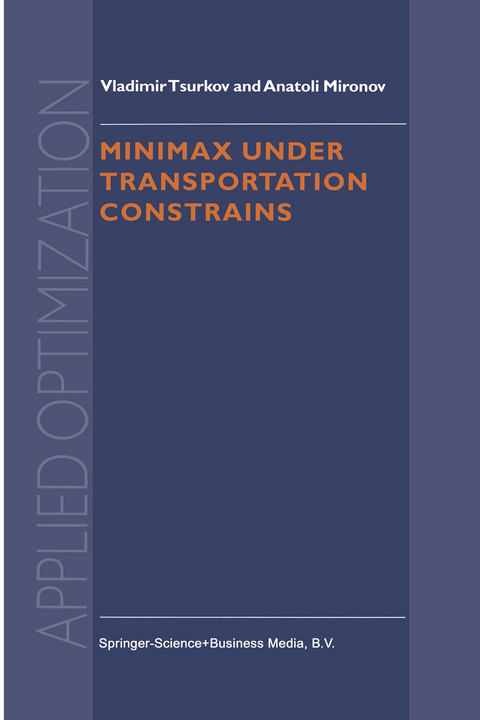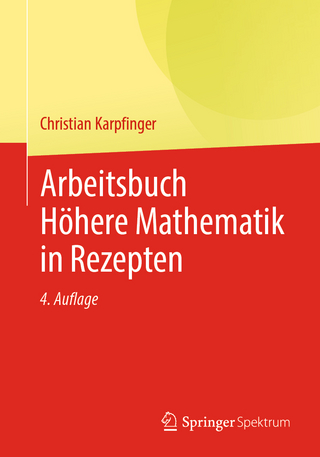
Minimax Under Transportation Constrains
Seiten
2013
|
Softcover reprint of the original 1st ed. 1999
Springer-Verlag New York Inc.
978-1-4613-6818-2 (ISBN)
Springer-Verlag New York Inc.
978-1-4613-6818-2 (ISBN)
Transportation problems belong to the domains mathematical program ming and operations research. Numerous concrete problems (for example, assignment and distribution problems, maximum-flow problem, etc. In this problem, supply and demand points are given, and it is required to minimize the transportation cost.
Transportation problems belong to the domains mathematical program ming and operations research. Transportation models are widely applied in various fields. Numerous concrete problems (for example, assignment and distribution problems, maximum-flow problem, etc. ) are formulated as trans portation problems. Some efficient methods have been developed for solving transportation problems of various types. This monograph is devoted to transportation problems with minimax cri teria. The classical (linear) transportation problem was posed several decades ago. In this problem, supply and demand points are given, and it is required to minimize the transportation cost. This statement paved the way for numerous extensions and generalizations. In contrast to the original statement of the problem, we consider a min imax rather than a minimum criterion. In particular, a matrix with the minimal largest element is sought in the class of nonnegative matrices with given sums of row and column elements. In this case, the idea behind the minimax criterion can be interpreted as follows. Suppose that the shipment time from a supply point to a demand point is proportional to the amount to be shipped. Then, the minimax is the minimal time required to transport the total amount. It is a common situation that the decision maker does not know the tariff coefficients. In other situations, they do not have any meaning at all, and neither do nonlinear tariff objective functions. In such cases, the minimax interpretation leads to an effective solution.
Transportation problems belong to the domains mathematical program ming and operations research. Transportation models are widely applied in various fields. Numerous concrete problems (for example, assignment and distribution problems, maximum-flow problem, etc. ) are formulated as trans portation problems. Some efficient methods have been developed for solving transportation problems of various types. This monograph is devoted to transportation problems with minimax cri teria. The classical (linear) transportation problem was posed several decades ago. In this problem, supply and demand points are given, and it is required to minimize the transportation cost. This statement paved the way for numerous extensions and generalizations. In contrast to the original statement of the problem, we consider a min imax rather than a minimum criterion. In particular, a matrix with the minimal largest element is sought in the class of nonnegative matrices with given sums of row and column elements. In this case, the idea behind the minimax criterion can be interpreted as follows. Suppose that the shipment time from a supply point to a demand point is proportional to the amount to be shipped. Then, the minimax is the minimal time required to transport the total amount. It is a common situation that the decision maker does not know the tariff coefficients. In other situations, they do not have any meaning at all, and neither do nonlinear tariff objective functions. In such cases, the minimax interpretation leads to an effective solution.
Preface. 1. Transportation Models with Minimax Criteria and Preliminary Constructions.2. Minimax Criteria and Solution Methods for Transportation Problems. 3. Integer Transportation Matrices. 4. Extremal Vector Pairs and Matrices. 5. Fundamental Polyhedrons. Index.
| Reihe/Serie | Applied Optimization ; 27 |
|---|---|
| Zusatzinfo | X, 310 p. |
| Verlagsort | New York, NY |
| Sprache | englisch |
| Maße | 155 x 235 mm |
| Themenwelt | Mathematik / Informatik ► Mathematik ► Algebra |
| Mathematik / Informatik ► Mathematik ► Angewandte Mathematik | |
| Mathematik / Informatik ► Mathematik ► Finanz- / Wirtschaftsmathematik | |
| Mathematik / Informatik ► Mathematik ► Geometrie / Topologie | |
| Mathematik / Informatik ► Mathematik ► Graphentheorie | |
| ISBN-10 | 1-4613-6818-9 / 1461368189 |
| ISBN-13 | 978-1-4613-6818-2 / 9781461368182 |
| Zustand | Neuware |
| Informationen gemäß Produktsicherheitsverordnung (GPSR) | |
| Haben Sie eine Frage zum Produkt? |
Mehr entdecken
aus dem Bereich
aus dem Bereich
Mathematik von Studierenden für Studierende erklärt und kommentiert
Buch (2024)
Springer Spektrum (Verlag)
34,99 €
Buch | Softcover (2022)
Springer Spektrum (Verlag)
39,99 €


